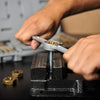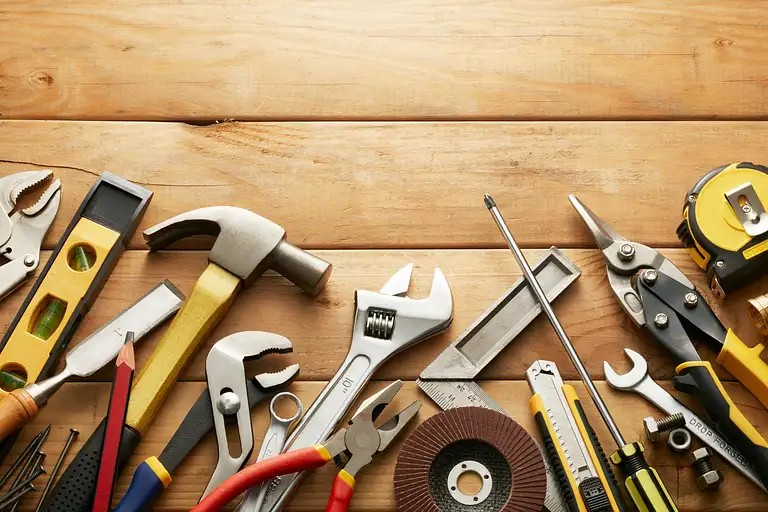
Different Types of Hand Tools and Their Uses
Hammers: Types and Uses
Hammers are one of the most commonly recognized and widely used hand tools. They are designed to deliver force or impact to objects, making them essential for tasks such as driving nails, breaking or shaping materials, and assembling or disassembling structures. Hammers consist of a handle and a weighted head, which can be made from various materials such as steel, brass, or fiberglass. The weight and shape of the head determine the hammer's specific purpose and functionality. Here, we will explore three common types of hammers and their uses:
Claw Hammer

The claw hammer is perhaps the most familiar type of hammer. It features a flat, striking face on one side of the head and a curved "claw" on the other side. The striking face is used for driving nails into various materials, while the claw is designed to remove nails or pry apart objects. The claw hammer is a versatile tool that is commonly used in woodworking, construction, and general repairs.
Ball Peen Hammer

The ball peen hammer, also known as a ball pein hammer, has a rounded peen or head instead of a claw. The peen can be either flat or rounded, and it is used for shaping and striking metal. The flat side of the head is typically used for striking punches or chisels. Ball peen hammers are commonly used in metalworking, blacksmithing, and automotive repairs.
Sledge Hammer
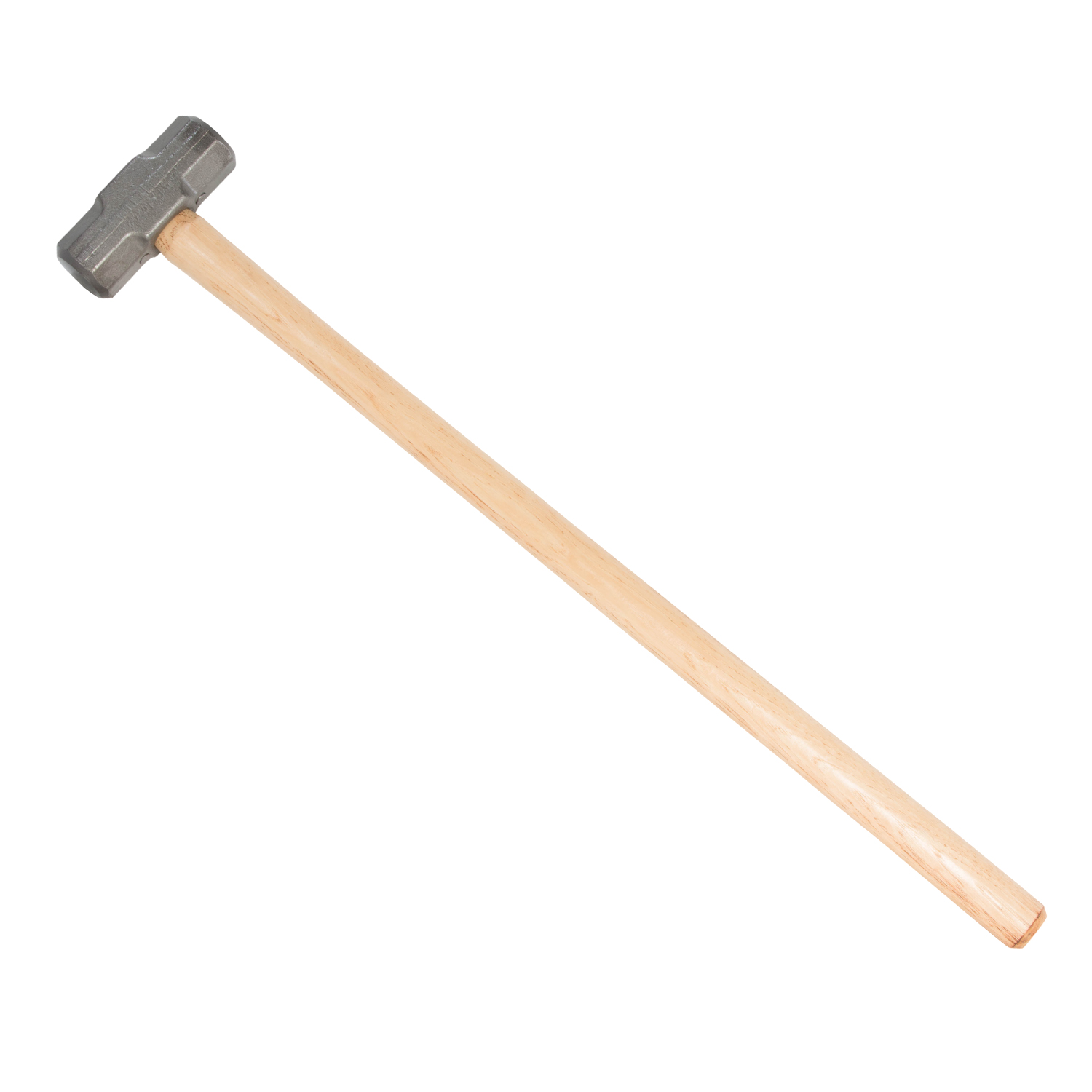
The sledgehammer is a heavy-duty hammer with a long handle and a large, flat striking face. It is designed for heavy-duty tasks that require significant force, such as demolition, driving stakes, or breaking through tough materials. Sledge hammers are commonly used in construction, landscaping, and industrial applications.
Each type of hammer has its specific uses and is suited for different tasks. By understanding the various types of hammers and their functions, you can select the appropriate hammer for your project, ensuring efficiency and accuracy in your work.
Screwdrivers: Types and Uses
Screwdrivers are indispensable hand tools used for turning screws and fasteners. They consist of a handle and a shaft with a tip that fits into the head of a screw or bolt. By applying torque to the screwdriver handle, the user can tighten or loosen screws, making them essential for a wide range of applications, including furniture assembly, electronics repair, and general maintenance. There are several types of screwdrivers, each designed for specific screw head types. Here, we will explore three common types of screwdrivers and their uses:
Flat Head Screwdriver

The flat head screwdriver, also known as a slotted screwdriver, has a flat, straight tip that fits into a slot on the screw head. This type of screwdriver is commonly used for screws with a single horizontal slot. Flat head screwdrivers are versatile and can be found in various sizes, making them suitable for a wide range of applications. However, they can be prone to slipping or camming out if not properly aligned, so care must be taken when using them.
Phillips Screwdriver
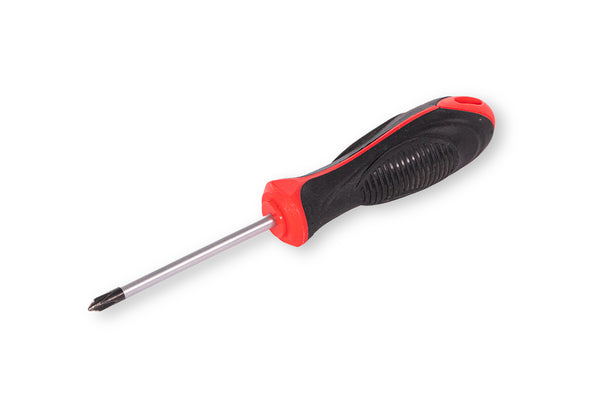
The Phillips screwdriver features a cross-shaped tip that fits into a corresponding cross-shaped recess on the screw head. This design allows for increased torque and reduces the likelihood of the screwdriver slipping or camming out. Phillips screwdrivers come in different sizes denoted by numbers (e.g., #0, #1, #2, etc.), with each size corresponding to a specific screw head size. They are widely used in electronics, automotive, and household applications.
Torx Screwdriver

The Torx screwdriver is designed for screws with a star-shaped recess in the screw head. It provides a higher torque transfer and reduces the risk of damaging the screw head or stripping the screw. Torx screwdrivers come in various sizes denoted by a T followed by a number (e.g., T5, T10, T20, etc.). They are commonly used in industries such as automotive, computer hardware, and appliances.
By having a variety of screwdrivers in your toolkit, you can handle different screw head types and sizes, ensuring that you have the right tool for any screw-related task. Whether it's tightening a loose screw or assembling furniture, understanding the different types of screwdrivers and their uses will make your projects more efficient and successful.
Pliers: Types and Uses
Pliers are versatile hand tools that are widely used in various industries, including electrical work, plumbing, automotive repair, and general DIY projects. They are designed to grip, bend, twist, or cut objects with precision and control. Pliers typically consist of two handles, a pivot point, and jaws that can be serrated, smooth, or have specific shapes to suit different tasks. Here, we will explore three common types of pliers and their uses:
Needle Nose Pliers
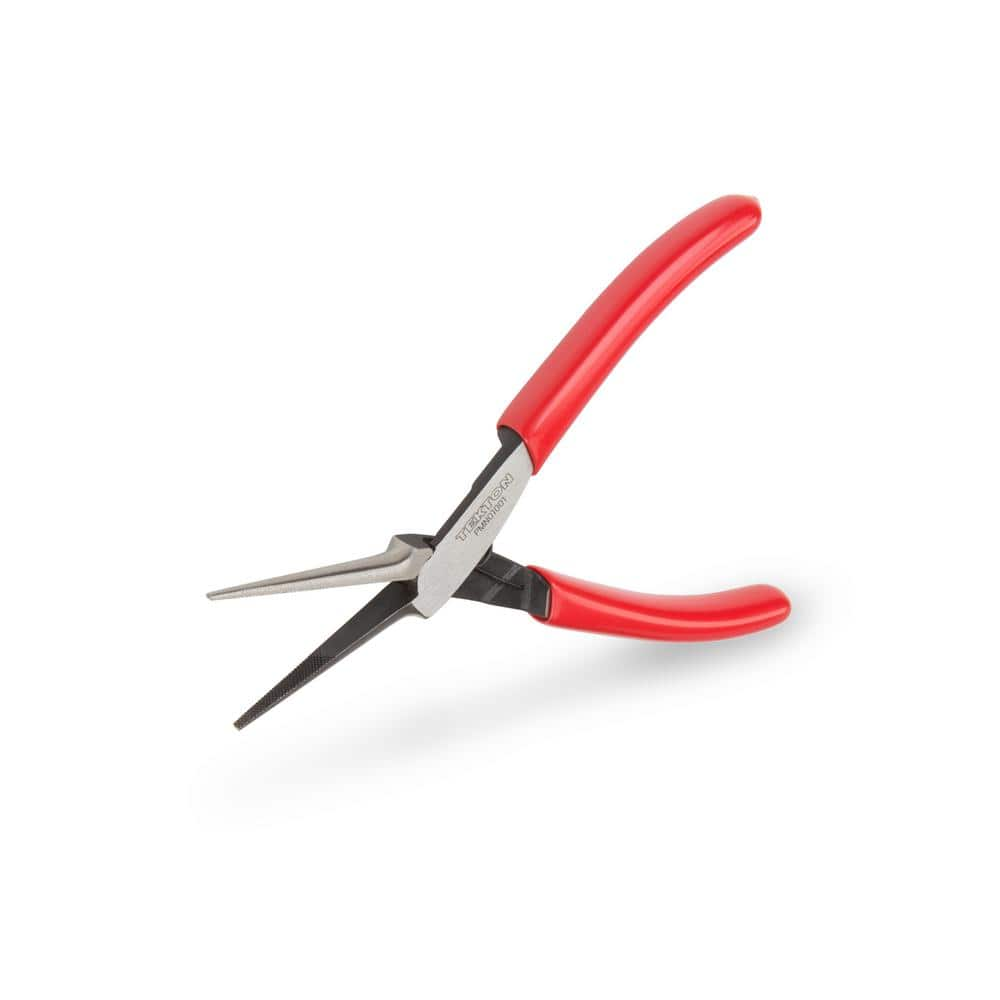
Needle nose pliers, also known as long-nose pliers, have long, thin jaws that taper to a point. This design allows for reaching into tight spaces or holding small objects with ease. Needle nose pliers are commonly used for bending wire, holding or manipulating small components, and working with electrical connections. They are an essential tool for electronics repair, jewelry making, and intricate mechanical work.
Channel Lock Pliers
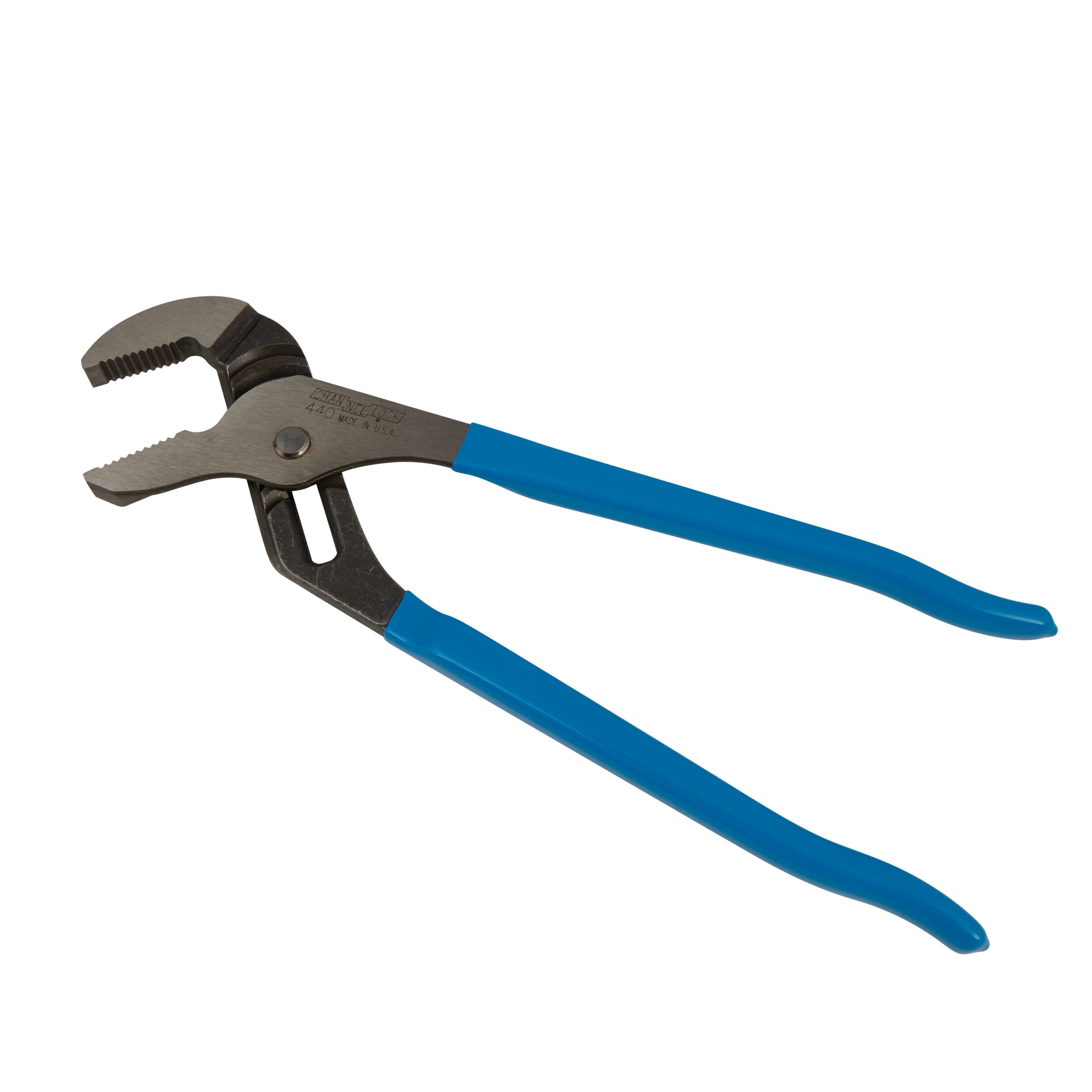
Channel lock pliers, also known as water pump pliers or slip joint pliers, have an adjustable pivot point, which allows the user to adjust the jaw opening to accommodate various sizes of objects. The jaws have serrated teeth that provide a secure grip on a wide range of materials. Channel lock pliers are commonly used for gripping and turning pipes, nuts, and bolts. They are ideal for plumbing, automotive repairs, and general maintenance tasks.
Diagonal Pliers
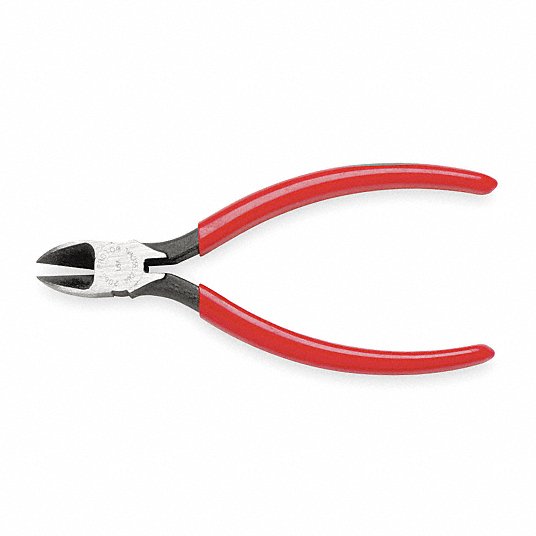
Diagonal pliers, also known as wire cutters or side cutters, have cutting edges that are angled to the handle. This design enables them to cut through wires, cables, and small nails with ease. Diagonal pliers are especially useful for electrical work, cable installation, and removing nails or staples. They offer precise cutting ability and are a must-have tool for electricians, carpenters, and DIY enthusiasts.
By having a set of pliers in your toolkit, you can handle a wide range of gripping, bending, twisting, and cutting tasks. Each type of pliers serves a specific purpose, ensuring that you have the right tool for the job. Whether you need to hold, twist, cut, or manipulate objects, pliers are an essential tool for any toolbox or workshop.
Wrenches: Types and Uses
Wrenches are essential hand tools used for tightening or loosening nuts, bolts, and other fasteners. They provide leverage and grip, allowing the user to apply torque to the fastener to secure or release it. Wrenches come in various shapes and sizes, each designed for specific applications and fastener types. Here, we will explore three common types of wrenches and their uses:
Open-End Wrench

The open-end wrench, also known as an open-end spanner, features U-shaped jaws with flat parallel surfaces. One end of the wrench has a fixed opening size, while the other end has a different size opening. Open-end wrenches are ideal for accessing fasteners in tight spaces or areas with limited clearance. They are commonly used in plumbing, automotive repairs, and general maintenance tasks.
Box End Wrench
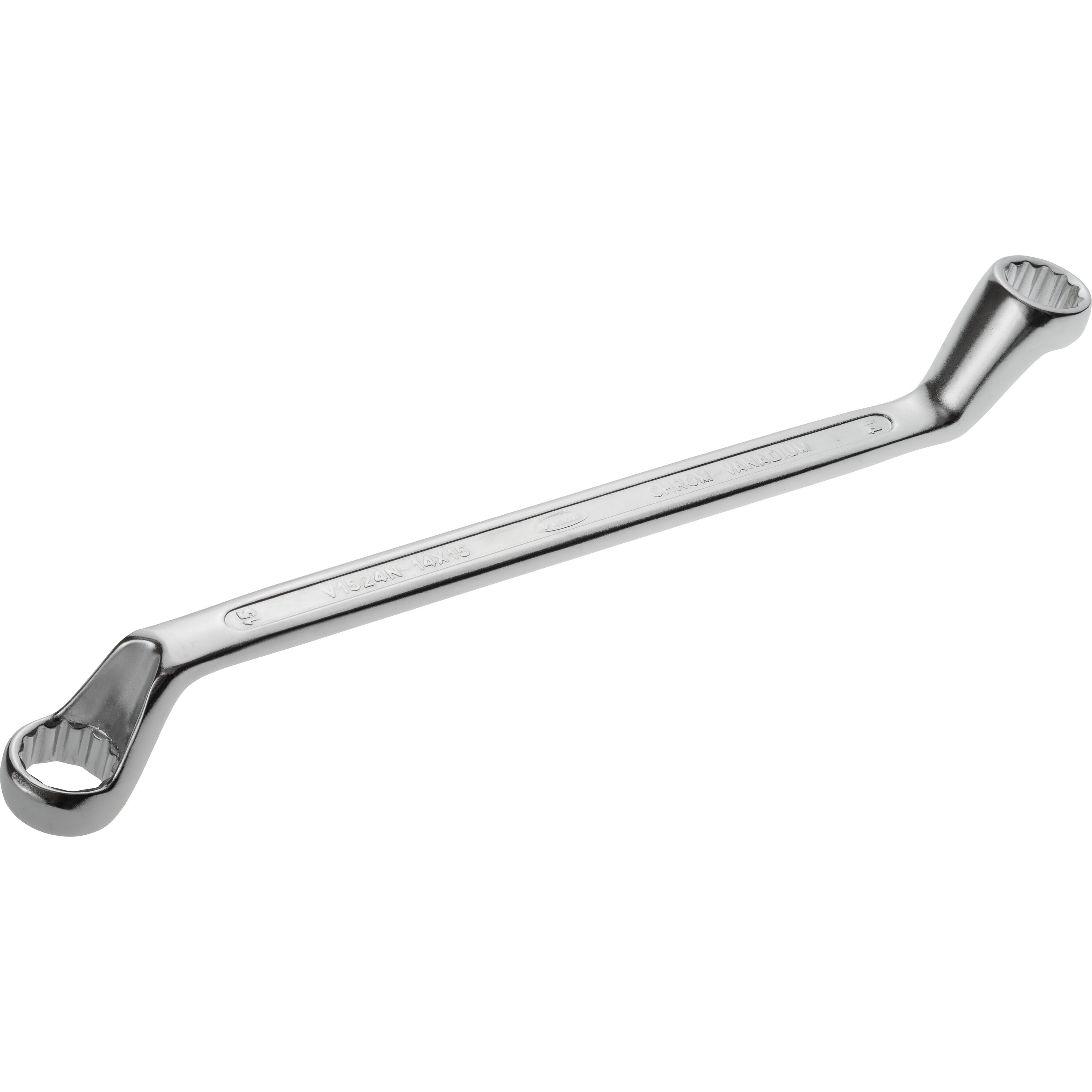
The box end wrench, also known as a closed-end wrench or ring spanner, has a closed loop or box-shaped end that completely surrounds the fastener. This design provides a more secure grip and reduces the risk of damaging the fastener. Box end wrenches are available in various shapes, including 6-point and 12-point configurations, each offering specific advantages. They are commonly used in automotive repairs, machinery maintenance, and construction.
Adjustable Wrench

The adjustable wrench, also known as a crescent wrench or adjustable spanner, has a movable jaw that can be adjusted to fit different sizes of fasteners. This versatility makes adjustable wrenches a practical choice when working with various fastener sizes. They are commonly used for plumbing, automotive repairs, and general household tasks. However, adjustable wrenches may not provide as secure of a grip as fixed-size wrenches, so caution must be taken to avoid damaging the fastener or slipping off.
By having a set of wrenches in your toolkit, you can tackle a wide range of fastening tasks with ease and precision. Each type of wrench offers different advantages, ensuring that you have the right tool for different fastener sizes and applications. Whether you need to tighten a bolt, loosen a nut, or assemble furniture, wrenches are indispensable tools for any DIY enthusiast, mechanic, or tradesperson.
Chisels: Types and Uses
Chisels are essential hand tools in the realm of woodworking and metalworking, prized for their ability to carve, shape, and refine materials with precision. The fundamental design of a chisel consists of a blade—often made of hardened steel—attached to a handle that provides the necessary leverage and control for various applications.
Wood Chisels

These are the most common types of chisels and are specifically designed for woodworking. They come in various shapes and sizes, including bevel-edge chisels, which are great for detailed work, and mortise chisels, designed for creating square holes in wood.
Cold Chisel

Made for cutting and shaping metal, cold chisels feature a thicker blade to withstand the impact from a hammer. They are perfect for removing burrs from metal edges or creating intricate designs in softer metals.
Paring Chisels

With a long, narrow blade, paring chisels excel in delicate work where precision is key. They are often used in cabinetry to achieve a fine finish and are manipulated by hand rather than struck with a hammer.
By selecting the right chisel for each job, you can achieve results that reflect professionalism and skill. The versatility of chisels means that whether you are a novice or an experienced woodworker, incorporating them thoughtfully into your projects can lead to exceptional outcomes.
Files: Types and Uses
Files are indispensable hand tools that serve a crucial role in the finishing stages of woodworking and metalworking projects. These tools consist of a hardened metal bar with a series of ridges or teeth along one or more of its surfaces, which are used to remove material and refine shapes. The craftsmanship involved in creating a smooth, precise finish on an object often relies on the adept use of files, making them essential in the toolkit of any serious DIY enthusiast or professional craftsman.
Flat Files

Flat files feature a flat surface and are typically used for general shaping and smoothing tasks. They can come in various lengths and tooth sizes, allowing for both coarse and fine finishes.
Round Files

Also known as rat-tail files, these files have a cylindrical shape and are ideal for enlarging holes or smoothing curves. They are particularly useful in metalworking and are commonly used to refine holes in mechanical components.
Half-Round Files

Combining features of both flat and round files, half-round files offer versatility in shaping and finishing. The flat side can be used for flat surfaces, while the rounded side is perfect for curves or intricate designs.
Understanding the various types of files and their appropriate uses, will enhance your ability to execute detailed tasks with precision. Whether you are refining edges, fitting joints, or creating intricate profiles, the mastery of filing techniques will undoubtedly elevate the quality of your craftsmanship.
Mallets: Types and Uses
Mallets are versatile hand tools that are essential for a variety of applications in woodworking, metalworking, and other crafts. Unlike hammers, which deliver a concentrated force through a hard striking face, mallets distribute their impact over a larger area due to their softer heads. This characteristic allows for more controlled striking, minimizing the risk of damaging the material being worked on.
Wooden Mallets

Often made from hardwoods like maple or beech, wooden mallets are popular among woodworkers for their ability to deliver gentle blows without damaging tools or workpieces. They are particularly effective when used with chisels or in joinery work.
Rubber Mallets

These mallets are designed with a rubber head, providing a softer impact than wood. Rubber mallets are commonly used in assembly work, as they can help fit parts together without marring the surface.
Dead Blow Mallets

Featuring a hollow head filled with sand or shot, dead blow mallets minimize rebound upon impact. This makes them ideal for tasks where precision is paramount, such as installing tile or driving dowels, as they prevent the tool from bouncing off the surface.
Mallets are crucial tools that play an important role in achieving precise results across a range of projects. By understanding the different types of mallets and their specific uses, you can make informed choices that enhance your work. Whether you are driving chisels, assembling joints, or shaping materials, the proper use of a mallet can lead to smoother, more refined outcomes in your craftsmanship.
Handsaws: Types and Uses
Handsaws are fundamental tools that have been utilized for centuries, providing a hands-on approach to cutting wood and other materials. These tools operate through a simple yet effective mechanism: a serrated blade that cuts through material as it is pushed or pulled. The handsaw embodies the essence of traditional craftsmanship, allowing artisans and DIY enthusiasts alike to achieve precision cuts without the need for electric power tools.
Crosscut Saws

Designed for cutting across the grain, crosscut saws feature teeth that are angled to slice through wood fibers efficiently. They are characterized by their fine-toothed blade, making them ideal for creating smooth edges.
Rip Saws

In contrast to crosscut saws, rip saws are made for cutting along the grain. Their teeth are larger and more aggressive, allowing for quicker cuts when working with lumber. This type of saw is essential for tasks such as breaking down larger pieces of wood.
Handsaws are invaluable tools that offer a unique combination of precision and control in woodworking. By understanding the different types of handsaws and their specific applications, you can enhance your craftsmanship and tackle a wider range of projects with confidence. Proper care and maintenance will ensure that your handsaws remain in excellent condition, allowing you to achieve exceptional results in all your woodworking endeavors.
Related Article: 5 Must-Have Household Tools Sets for Every Home

